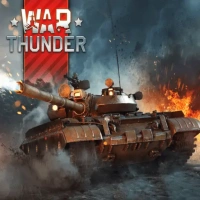
Latest Version
latest
June 02, 2024
Ubisoft
Games
Windows
55,637
Report a Problem
More About Far Cry 3
### Far Cry 3: A Revolution in Open-World Gaming
Far Cry 3, released in 2012 by Ubisoft, is often hailed as a seminal entry in the first-person shooter (FPS) genre, particularly within the open-world format. It successfully melded a compelling narrative with expansive, explorable environments, setting a benchmark for future games. Its blend of storytelling, character development, and gameplay mechanics brought a fresh dynamism to the series and the gaming industry at large.
#### Story and Setting
Far Cry 3 is set on the fictional Rook Islands, a lush tropical archipelago dominated by chaos and lawlessness. The player assumes the role of Jason Brody, a young man on vacation with friends who finds himself thrust into a harrowing ordeal after a skydiving trip goes awry. Jason and his friends are captured by pirates led by the sadistic Vaas Montenegro. The narrative follows Jason's transformation from a helpless tourist to a hardened survivor, driven by the need to rescue his friends and escape the island.
The game’s story is a dark, psychological journey exploring themes of survival, insanity, and the loss of innocence. Vaas Montenegro, portrayed by Michael Mando, stands out as one of gaming’s most memorable villains. His unpredictable nature and philosophical monologues add a layer of depth and menace, making him a standout character whose impact is felt throughout the game.
#### Gameplay and Mechanics
Far Cry 3’s gameplay revolves around a mix of shooting, exploration, and crafting. The open-world design encourages players to engage with the environment and tackle objectives in a variety of ways. Key mechanics include:
1. **Open-World Exploration**: The Rook Islands are richly detailed and diverse, ranging from dense jungles to treacherous mountains. Players can explore on foot, by vehicle, or even by glider, encountering wildlife and hidden treasures.
2. **Combat and Stealth**: The game offers flexibility in combat, allowing for both guns-blazing and stealthy approaches. Players can utilize a range of weapons, upgrade them, and employ tactics like setting traps or using the environment to their advantage.
3. **Crafting and Skills**: Players can hunt animals and gather plants to craft equipment and syringes that enhance abilities. The skill tree system lets players unlock new abilities, tailored to their preferred playstyle, such as enhanced stealth, improved combat techniques, or survival skills.
4. **Dynamic Environment**: Far Cry 3’s world feels alive, with a dynamic day-night cycle and weather systems that affect gameplay. The AI behaviors of enemies and wildlife add unpredictability, requiring adaptive strategies from the player.
#### Critical Reception
Upon release, Far Cry 3 received widespread acclaim from critics and players alike. Its storytelling, open-world design, and character performances were particularly praised. Reviewers highlighted the game’s ability to blend a compelling narrative with an engaging and interactive world, noting it as a significant improvement over its predecessors.
The game's critical success is reflected in numerous awards and nominations, particularly for its narrative and character development. The portrayal of Vaas Montenegro earned high praise, with many considering him one of the greatest villains in video game history.
#### Legacy and Influence
Far Cry 3’s impact on the gaming industry is profound. It set a new standard for open-world design, influencing numerous games that followed. The success of its formula can be seen in subsequent titles within the Far Cry series, as well as other Ubisoft franchises like Assassin’s Creed and Watch Dogs, which adopted similar open-world mechanics and narrative styles.
The game also pioneered several mechanics that have become staples in the genre, such as outpost liberation and the integration of crafting systems into the core gameplay loop. These innovations have been emulated and refined in various other games, underscoring Far Cry 3’s lasting legacy.
#### Conclusion
Far Cry 3 stands as a landmark title in the history of video games, a perfect blend of narrative depth, character complexity, and open-world freedom. It redefined player expectations for the FPS genre and open-world design, leaving an indelible mark on the industry. The game's success lies in its ability to balance an engaging story with expansive, interactive gameplay, making it a timeless classic that continues to influence modern game design.
|
|
|
|




























 Games
Games Desktop Enhancements
Desktop Enhancements Social & Communication
Social & Communication DVD & Blu-ray
DVD & Blu-ray Security & Anti virus
Security & Anti virus Office & Business Tools
Office & Business Tools Videos & Editing
Videos & Editing System Tuning & Tools
System Tuning & Tools File Transfer and Networking
File Transfer and Networking Developer Tools
Developer Tools Travel & Navigation
Travel & Navigation Browsers & Plugins
Browsers & Plugins VPN
VPN Photo & Design
Photo & Design